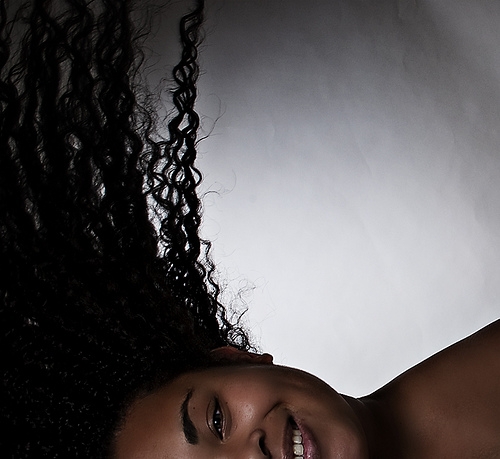I recently talked to a friend who had questions about the amount of breakage she was experiencing while trying to grow her relaxer out to go natural.
She didn't understand why she was losing so much hair and was two seconds from giving up because she thought it had something to do with her new growth ruining her hair.
I told her that she needed to take into account that she was dealing with TWO DIFFERENT TEXTURES in her hair now. She can no longer treat her hair as she would if it was still relaxed; however, she can't simply jump into a natural hair routine either & neglect her chemically treated ends.
So this is a quick run-down of what is going on with the transitioning process & how to minimize breakage.
LINE OF DEMARCATION
The point where your relaxed hair and new growth meet is called the line of demarcation. Here, your hair is very weak and it is where you can expect the most breakage. This is why it is recommended that a touch-up relaxer is done ever 4-6 weeks. The presence of two different textures can cause hair to break more easily.
CONDITION
If there was ever a time for you to really focus on conditioning your hair, THIS IS IT. Keeping the protein and moisture in your hair balanced can prevent breakage, especially when you are transitioning. Of course, your new growth and relaxed ends may need different kinds of product to ensure that this balance is maintained; however, taking the extra time to figure out when to use what products is worth the effort. Go
here to read more about balanced hair.
MOISTURIZE
If you keep up with my blog, you are probably tired of hearing this. But I can not stress how important moisturizing your hair is. If you are trying to avoid your hair snapping at the line of demarcation, then preventing it from getting dry is one of the best ways to do it. Find an earlier post on how to properly moisturize hair
here.
BLENDING
One thing people are always afraid of is how they will look when they venture away from their usual straight hair styles. You will never find your new niche if you stay in your old one. When transitioning, your focus has to be on blending your two hair textures, NOT making your new growth look like your relaxed ends. This means giving the blow dryer & flat iron a rest and experimenting with braid outs and roller sets and other hair styles done while the hair is still wet. Plus, all of that heat will put stress on the line of demarcation & what are we trying to avoid here? Right. Breakage.
TRIM
I know how hard it can be to let go of length. But you need to pay attention to how your ends are looking so that you know when it is time to trim those relaxed ends. You want to avoid any split ends traveling up the shaft of the hair. I have recently adopted the "Search-and-destroy" method for trimming my hair>>>post coming soon!!!
PROTECT
Wearing protective hairstyles to keep your ends tucked away, wearing a satin scarf or cap at night, and investing in a satin pillowcase or two will help prevent breakage, as well. Put the flat iron DOWN. Unless it is a hooded dryer, try not to do it. In case you missed it before, flat ironing and blow drying yank on the hair and snap! Another tip--combing dry hair is a NO-NO!!! The best time to detangle the hair is during the conditioning process. Run the comb through the hair once the conditioner is in it, starting at the ends of the hair and working your way up--DO NOT EVER COMB YOUR HAIR STRAIGHT THROUGH FROM THE ROOTS ALL THE WAY TO THE ENDS! That is a recipe for extreme breakage.
Many of the things mentioned here are tips that should be used on all hair. Transitioning from relaxed to natural is such a fragile time for hair, though so skimping on any of these things could be asking for extra hardship and possible disaster. If you can get these things down and make them a habit during the transitioning process, once all of the relaxed hair has been removed you will be in great shape for caring for your natural hair.
Once again, I encourage any questions or comments!!! This is a very general post & I can go into more detail on any of these tips. Just ask! I'll do my best to suggest ways to ease your frustrations!



